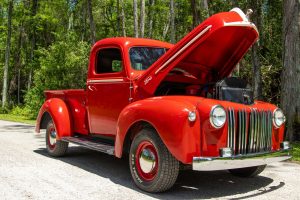Honda, Nissan, and Mitsubishi: Inside the Potential Alliance
In the world of automobiles, there are few names that are as recognizable and reputable as Honda, Nissan, and Mitsubishi. These three Japanese car giants have been producing top-quality vehicles for decades and have gained a loyal following from consumers worldwide. But as the automotive industry continues to evolve and innovate, the three manufacturers are considering a potential alliance that could shake up the market. In this article, we take a closer look at Honda, Nissan, and Mitsubishi and explore the possibilities of their potential alliance.
The History of Honda, Nissan, and Mitsubishi
Before delving into the potential alliance, it’s essential to understand the history and success of each manufacturer independently. Let’s begin with Honda – the youngest of the three companies, founded in 1948 by Soichiro Honda. The company quickly gained recognition for its motorcycles and eventually expanded into producing cars in the 1960s. Today, Honda continues to be one of the top-selling car brands globally, with a strong focus on efficiency and innovation.
Nissan, on the other hand, has been in the automobile industry for over a century since its inception in 1914. The company has a rich history of producing iconic vehicles, including the Datsun brand, which was rebranded as Nissan in 1981. Nissan is known for its wide range of models, from affordable sedans to high-performance sports cars, catering to a diverse consumer base.
Mitsubishi has been in the automotive industry since 1917, and like Nissan, it has a history of producing iconic models. But it wasn’t until the 1970s when the company gained international recognition with the release of their popular Lancer and Galant models. Mitsubishi’s innovation in technology and commitment to providing environmentally-friendly vehicles has solidified its position as one of the leading car manufacturers in the world.
The Potential Alliance
In February 2020, reports emerged that Honda, Nissan, and Mitsubishi were in talks to form an alliance that could potentially save costs and increase competitiveness in the evolving automotive market. The alliance would involve sharing technology, platforms, and even vehicles between the three manufacturers, resulting in significant cost-saving for all parties involved.
The Advantages of an Alliance
One of the primary advantages of this alliance is the sharing of costs and risks. By collaborating, the manufacturers would be able to develop new technologies and vehicles at a much lower cost than if they did so individually. This would also allow them to pool their resources and expertise, resulting in quicker innovation and development of future models.
Additionally, an alliance would provide an opportunity for the companies to expand into new markets and reach a wider consumer base. With each manufacturer having strongholds in different regions, this alliance would allow them to leverage each other’s market presence and gain a competitive advantage.
Potential Challenges
Of course, along with the potential advantages, an alliance also presents challenges that the manufacturers would have to navigate. One major concern would be the possibility of brand dilution. Each of the three companies has a unique brand image and loyal customer base – an alliance would need to strike a balance between collaboration and maintaining individual identities to avoid alienating their customers.
Another challenge would be managing the logistics of sharing technology and resources. The three companies have different processes and systems in place, and it would require effective communication and cooperation to ensure a smooth transition in this regard.
The Future of Honda, Nissan, and Mitsubishi
In conclusion, the potential alliance between Honda, Nissan, and Mitsubishi could bring about significant changes in the automotive industry. While the idea is still in its initial stages, the benefits and challenges highlighted above highlight the potential impact it could have on the market. As consumers, we can only wait and see how this alliance unfolds, and until then, we can continue to enjoy the top-quality vehicles produced by these three reputable manufacturers.











